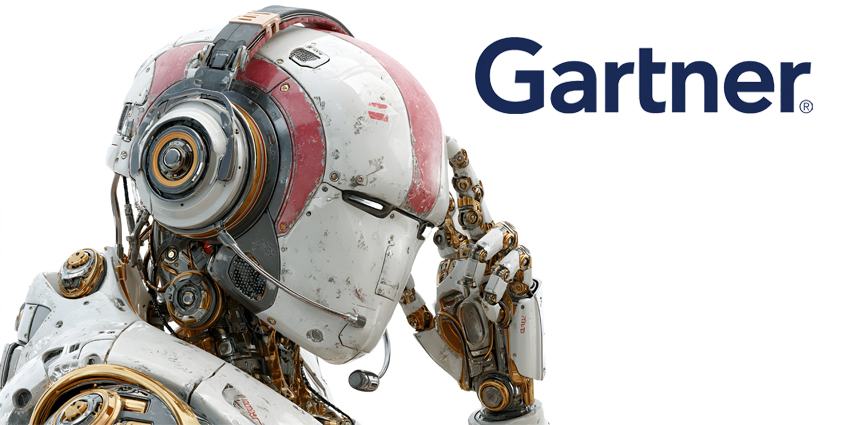UiPath leads the robotic process automation (RPA) space, accumulating an impressive 35.8 percent market share.
The statistic comes from Gartner’s latest global Market Share Analysis study into the RPA field.
According to the study, UiPath dwarfs its closest competitors, with no other tech provider holding more than a ten percent share.
Indeed, its rival vendors – Automation Anywhere (9.7 percent), SS&C Blue Prism (8.7 percent), and Microsoft (3.3 percent) – seemingly have significant ground to make up.
The following chart from the Gartner report underlines this – showcasing that UiPath’s market share is over ten times the size of Microsoft’s.

Yet, perhaps the most striking takeaway from this graphic relates to UiPath’s rapid rise. Indeed, the vendor only accounted for 1.6 percent of the market in 2016.
While its growth curve may have slowed over the past three years, UiPath has cemented its market dominance, with Gartner noting this is the fourth consecutive year it has topped the charts.
Inside the report, the research firm also stated:
UiPath is a dominant player owing to its strong performance, global brand recognition, a customer and partner ecosystem of more than 2.5 million members, and its market-influencing narrative about AI-powered automation.
Gartner also named UiPath a “leader” in its most recent Gartner Magic Quadrant for RPA.
In that study, Gartner highlighted the provider’s RPA-specific partner integrations, product strategy, and proven ability to execute as considerable strengths.
Many prominent RPA practitioners and thought leaders will agree with this sentiment. That includes Wayne Butterfield, Global Lead for Augmented Intelligence at ISG, who exclusively shares his perspectives on the market share research below.
An Analyst’s Perspective
Butterfield believes the suite of complementary capabilities that UiPath couples with its “solid” RPA product drives the vendor’s market leadership.
These capabilities widen the scope for automation, “ensuring the ceiling that many end clients hit with RPA alone lifted further,” he suggests.
To achieve this, UiPath delved deep into adjacent fields, such as Optical Character Recognition (OCR) and Process Mining, opening up many new opportunities for customers.
Alongside this, the provider has more than 5,000 partners and resellers globally. Underlining the significance of this ecosystem, Butterfield says:
They have a much broader reach than the other RPA vendors, getting into clients that others may have struggled with.
Finally, Butterfield notes that UiPath has become the analysts’ preferred RPA provider for the past three or four years. That timespan corresponds with how long the provider has led the RPA space, in terms of market share, as per the Gartner report.
“Anyone who picked up an analyst paper would have seen the product as the market leader, making it the more obvious choice as the market grew at pace,” concluded Butterfield.
Can Microsoft Catch Up?
Some have touted UiPath’s market dominance as a driving factor in Microsoft’s decision to cut the price of Power Automate, democratize AI, and – ultimately – close the gap.
Indeed, during its recent Microsoft Inspire event, the tech giant trimmed the price tag of its Power Automate Desktop by 60 percent.
Moreover, Microsoft also unveiled a new “Power Automate Premium” license, which costs the same as the Per user plan previously did at $15 per user per month.
Yet, Tim Olsen, Consulting Director of Intelligent Automation & Emerging at Emposo, believes that Microsoft has to do much more to close the gap on UiPath.
Discussing Microsoft’s price cuts, Olsen argued on LinkedIn:
Will this revolutionize the market? No. Here’s why: Power Automate was already hugely cheaper than other RPA alternatives.
“Price isn’t the main factor when selecting a platform. Microsoft could make it free, and it still wouldn’t make significant waves.
“Yes, PA (Power Automate) is gaining ground in the market as its functionality improves, but that’s the driving factor, not the price.”
As such, it seems that Olsen is not ruling Microsoft out in the long run, and few would, given the vast resources the tech juggernaut has at its disposal.
Yet, it must do more than lower the price barrier to entry in the RPA space to make significant inroads.
After all, Microsoft – and other market stalwarts – have lots of ground to make up as UiPath benefits from its reputation of being THE comprehensive business-level automation platform provider.
Indeed, as the Gartner research establishes, this seems to be the overriding perception – similar to that of Salesforce in the CRM market.







